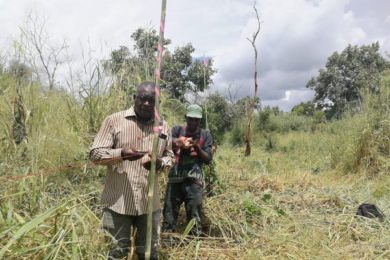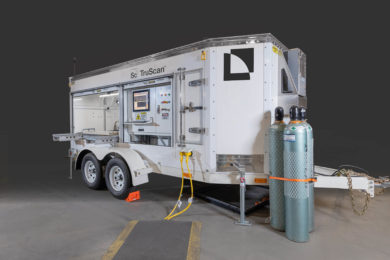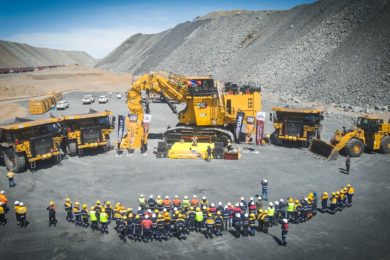Perth-based emerging graphite developer, Walkabout Resources has become the first ASX-listed entity to be granted a mining licence in resource-rich Tanzania. Speaking on the second day of the three day Paydirt 2018 Africa Down Under mining conference in Perth, Walkabout Resources’ Executive Director, Allan Mulligan, announced the approval – the breakthrough towards the company now developing its $29 million high-grade open-pit Lindi Jumbo graphite mine in southeast Tanzania.
“The approval is a sign that Tanzania’s mining sector is open for business with the introduction and implementation successfully of the much more transparent mining legislature over the past 12 months,” Mulligan said. “Securing the mining licence means Walkabout can now fast-track Lindi Jumbo and we anticipate first shipments of large flake graphite concentrate within nine to 12 months.
“The construction of the mining infrastructure is conventional and straight forward, and will be based around the importation of modular processing units from China.”
Mulligan said the mining approval also meant the company could now complete the EPC with construction partner, Yantai Jinpeng Mining and Machinery to allow final plant orders to be placed.
Project funding options could also now be finalised.
A high grade graphite ore reserve has been defined at Lindi Jumbo and Walkabout also owns a 70% stake in an adjoining graphite prospective licence.
At the same conference, an Australian company set to contribute more than $1.0 billion to the Tanzanian economy over the next 20 years through local graphite mine projects, says the global market opportunity for battery grade graphite is unequivocal.
Kibaran Resources Chairman, Robert Pett, said the market opportunity for the commodity was “now” despite a lot of “noise” around the battery component supply chain and forecast supply and demand estimates.
“A raft of high end, credible industry and government agencies have initiated substantial modelling around graphite and the opportunity it presents is quite clear,” Pett said.
“Standout and verifiable conclusions range from the expected presence of one billion electric vehicles on the world’s roads by 2025 under a lithium-ion battery market momentum worth $290 billion by 2025,” he said.
“Some 47% of the lithium-ion battery market will require a component contribution from spherical graphite and this will generate a 700% increase in natural flake spherical graphite demand in just the next seven years.
“This will stretch global consumption of natural flake spherical graphite from 127,000 t/y currently to 800,000 t/y.”
Cobalt, nickel, lithium and manganese would fulfil the suite of ingredients needed for lithium-ion battery production.
Pett also pointed to the accelerating demand from the energy industry for domestic and industrial application lithium-ion battery storage options.
“The expected energy expenditure is mind boggling – a forecast $8 trillion investment in new wind and solar production globally through to 2050, and a $500 billion investment through that period in new battery storage capacity,” Pett said.
“We believe projects like Kibaran’s advanced high grade natural flake graphite undertaking at Epanko in Tanzania are of the calibre offering the required scalability, long-term supply profile and the duality of either concentrate supply or special value-adding spherical graphite.”
Epanko has a NPV of $211 million based on 60,000 t/y of graphite concentrate with offtake agreements already in place with European and Japanese customers as well as debt financing support from German and Australian lenders for its estimated $89 million pre-production capex cost.
The project offers a further NPV of $145 million for adding a downstream spherical processing arm of up to 20,000 t/y via the establishment of purification facilities in key customer markets.
Spherical graphite pilot plant testing is already underway in Germany to produce test material for battery anode manufacturers with the plant easily able to be expanded to commercial output.
Pett said the Kibaran contribution to the Tanzanian economy from a maturation of its Epanko aspirations would be substantial.
“It would help position Tanzania as a major player in this massive new global industry, offer both natural flake graphite production and a new value-adding manufacturing industry and expand trade partnerships into growth economies such as Germany, South Korea, Japan and North America.”
It is estimated Kibaran’s graphite mining and processing presence in Tanzania will generate 300 direct jobs and up to 4,500 indirect employment opportunities.










